Get 10 Hours of Free Odoo Consulting — Worth $500!
 Connect 2025
Connect 2025

4-5 September 2025
San Francisco, CA

Meet Rahul Kapoor
Business Director US.
Sign up for our services and get 10 Hours of Free Odoo Consulting Worth $500

Drive Your Business Forward with Navabrind IT Solutions
![]() Limited-Time Offer – Claim Before It Expires!
Limited-Time Offer – Claim Before It Expires! ![]() Limited-Time Offer – Claim Before It Expires!
Limited-Time Offer – Claim Before It Expires! ![]() Limited-Time Offer – Claim Before It Expires!
Limited-Time Offer – Claim Before It Expires! ![]() Limited-Time Offer – Claim Before It Expires!
Limited-Time Offer – Claim Before It Expires! ![]() Limited-Time Offer – Claim Before It Expires!
Limited-Time Offer – Claim Before It Expires! ![]() Limited-Time Offer – Claim Before It Expires!
Limited-Time Offer – Claim Before It Expires! ![]() Limited-Time Offer – Claim Before It Expires!
Limited-Time Offer – Claim Before It Expires! ![]() Limited-Time Offer – Claim Before It Expires!
Limited-Time Offer – Claim Before It Expires! ![]()
Trusted by large brands
















Who We Are
Navabrind IT Solutions is a leading digital transformation company with over 12 years of experience delivering end-to-end technology solutions to enterprises across industries. Specializing in ERP implementation, e-commerce development, and custom application services, we help businesses streamline operations, enhance customer experiences, and drive growth. With a strong presence across the United States, Navabrind IT Solutions partners with organizations of all sizes to deploy scalable and cost-effective platforms like Odoo, Magento, Microsoft Dynamics, SAP, and Oracle. Our expert teams bring deep industry knowledge and a consultative approach to ensure successful digital outcomes tailored to each client’s unique needs.
Our Certifications
We are honored to carry this certification as it reflects our dedication to quality, transparency, and international excellence.

Our NASSCOM certification reflects industry trust and excellence in delivering cutting-edge IT solutions.

Odoo Modules We Implement

Website
Business website builder

E-Commerce
Sell your products online

Blog
Publish announcements, news, and blog posts

Live Chat
Chat with your website visitors

Forum
Manage a forum with FAQ and Q&A

E-Learning
Manage and publish courses

CRM
Monitor leads and gain opportunities

Sales
From quotes to invoices

Point of Sale
POS interface for stores and restaurants

Signatures
Recurring invoices and renewals

Lease
Manage contracts, deliveries, and returns

Financial
Manage financial and analytical accounting

Invoicing
Invoices and Payments

Expenses
Manage employee expenses

Documents
Document management

Spreadsheets
Document spreadsheet

Document Signing
Sign documents online

Inventory
Manage your inventory and logistics activities

Manufacturing
Manufacturing Orders and Bills of Materials

PLM
Product Lifecycle Management

Shopping
Purchase orders, proposals, and contracts

Maintenance
Track equipment and manage requests

Quality
Control the quality of your products

Employees
Centralize employee information

Recruitment
Track your recruitment funnel

Day off
Allocate paid vacation and track time-off requests

Reviews
Evaluate your employees

Indications
Share job openings and refer friends

Fleet
Manage your fleet and track car costs

Marketing Automation
Create automated mass communication campaigns

Email Marketing
Create, send, and track emails

SMS Marketing
Create, send, and track SMSs

Social media
Manage your website's social media and visitors

Events
Publish events and sell tickets

Search
Submit your surveys or share them in real time

Project
Organize and plan your projects

Timesheet
Control employee time on tasks

Field Service
Schedule and track time, material, and on-site operations

Help Center
Monitor, prioritize, and resolve customer calls

Planning
Manage employee schedules

Commitments
Allow people to schedule meetings on your calendar

Messages
Chat, email gateway, and private channels

Approvals
Create and validate approval requests

Internet of Things
Basic and auxiliary models to support IoT

VOIP
Make and receive phone calls

Knowledge
Manage your knowledge library

Studio
Create and customize your Odoo applications
Our Services
Odoo for Manufacturing
Streamline complex production workflows with Odoo’s integrated MRP, quality, and maintenance modules—designed for precision and scalability.
Odoo for Distribution
Optimize inventory, warehousing, and multi-location order fulfillment with Odoo’s real-time distribution management capabilities.
Odoo for Retail
Deliver seamless in-store and online experiences with Odoo’s unified POS, inventory, and customer engagement tools.
Odoo for eCommerce
Launch, scale, and manage custom e-commerce platforms with Odoo’s flexible architecture and powerful backend integration.
Odoo for Supply Chain
Gain end-to-end visibility and control over your supply chain with Odoo’s demand planning, procurement, and logistics solutions.
Why Choose US?
Navabrind IT Solutions is a trusted digital transformation partner with over a decade of experience delivering customized ERP, e-commerce, and Product Information Management (PIM) solutions. We specialize in Odoo, Magento, and Akeneo, PIM, Odoo-PIM, helping businesses in manufacturing, retail, electronics, EV, hospitality, logistics, e-commerce, and other industries streamline operations and drive sustainable growth. With deep industry expertise and a strong focus on innovation, we offer end-to-end implementation, global delivery, and onsite support to ensure long-term success.
Expertise Across Platforms
Specialized in Odoo, Magento & Akeneo
Industry-Focused Solutions
Deep experience in manufacturing, retail & distribution
Global Reach, Local Support
Serving worldwide with onsite implementation services
Innovation & Scalability
AI-driven solutions tailored for business growth
Trusted Odoo Partner for ERP Implementation


Co-Founder













Odoo Integrations
As a certified Odoo partner, Navabrind IT Solutions specializes in integrating Odoo ERP with CRMs, payment gateways, shipping providers, third-party logistics, IT tools, and a host of tools used by Manufacturing comapnies. Our integrations are secure and customized to the needs of US businesses. With deep functional expertise and robust technical capabilities, we tailor each integration to meet unique business needs, driving process automation and operational efficiency at scale.








Odoo Data Migration
Effortlessly migrate decades of business-critical data into your Odoo ERP system with our proven methodology. We’ve successfully handled over 50 million records—including sales, finance, inventory, and customer data—ensuring accuracy, security, and zero downtime for U.S.-based businesses. Transition confidently with our expert-led migration services.

Value-Added Solutions from Navabrind IT Solutions
Experience greater operational efficiency with value-added solutions from Navabrind IT Solutions—such as PPAP (Production Part Approval Process) to ensure manufacturing compliance and PIM (Product Information Management) for centralized, enriched product data across all channels. We go beyond standard Odoo ERP implementations by delivering tailored workflows, AI-powered automation, and actionable analytics that drive measurable business outcomes and maximize your technology investment.
PPAP Custom Module for Manufacturing
Our PPAP (Production Part Approval Process) module is designed to help manufacturers streamline their part approval workflows.
Efficient Part Approval:
Automate and speed up the approval process.
Compliance Assurance:
Meet industry standards effortlessly.
Real-Time Updates:
Track progress and approvals in real time.
PIM for E-commerce and Retailers
Our Product Information Management (PIM) solution helps e-commerce businesses centralize and manage product data across all channels.
Centralized Data:
Automate and speed up the approval process.
Consistent Across Channels:
Meet industry standards effortlessly.
Enhanced Customer Experience:
Track progress and approvals in real time.
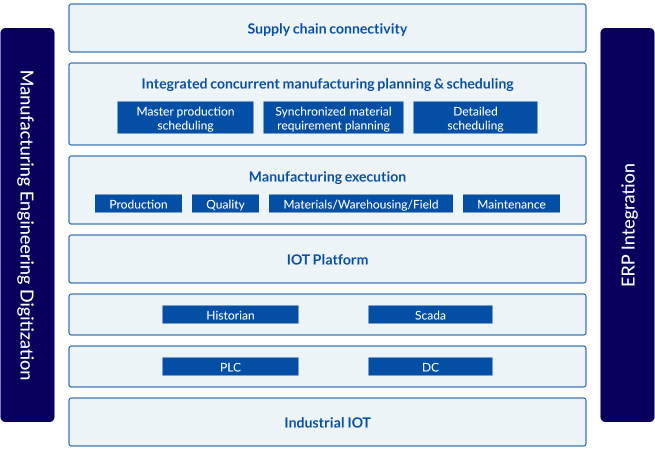
Our Crucial Integrations: MES & MOS for Manufacturing Excellence in the USA
Flawlessly migrate decades of business-critical data to your Odoo ERP system with our proven methodology. We’ve successfully handled over 50 million records—including sales, finance, inventory, and customer data—ensuring accuracy, security, and zero downtime for U.S.-based businesses. Transition confidently with our expert-led migration services. Our integrations with MES (Manufacturing Execution Systems) and MOS (Manufacturing Operations Systems) ensure real-time visibility, process optimization, and smart shop floor coordination within your Odoo ERP environment.
Odoo MES – Real-Time Control from Shop Floor to Top Floor
Navabrind IT Solutions delivers fully integrated MES systems for real-time production tracking and quality control.
Odoo MRP
Automate work orders, BoM management, and production planning
Odoo PLM
Manage engineering changes with seamless cross-team collaboration
Odoo Maintenance
Enable preventive and predictive maintenance
Odoo Quality
Real-time inspections, traceability, and compliance
Odoo CRM & Sales
Connect sales feedback directly with production
MOS – Streamlined Manufacturing Operations System
Our tailored MOS bridges the gap between strategy and execution—ensuring production aligns with your KPIs and goals.
Key Benefits:
- Centralized operations dashboard for production managers
- Real-time shop floor data integration
- Visual KPIs to monitor throughput, downtime, and efficiency
- Alerts and escalations for deviation handling
- Performance analytics to drive continuous improvement
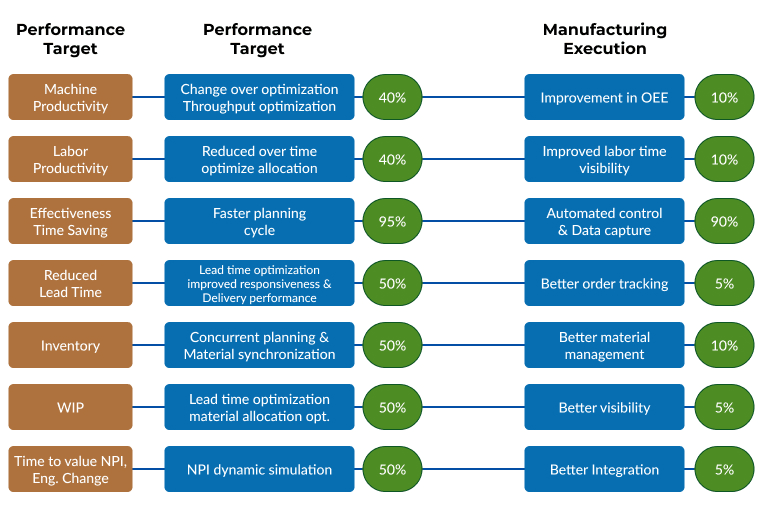
20+ MES Implementations Across the USA
Join the growing list of manufacturers optimizing for success with Navabrind IT Solutions’ smart factory solutions.

DDI Migration – Seamless Legacy to ERP Transition
Modernize your business systems with Navabrind IT Solutions expert DDI (Distributor Data Interface) migration services. We help distributors and manufacturers transition from DDI systems to powerful, scalable Odoo ERP solutions—without data loss or disruption.
Key Highlights:
- Migrated 20+ years of DDI data with 50M+ records
- Preserved historical transactions, pricing rules, customer/vendor data
- Zero-downtime data transfer with full validation
- Seamlessly mapped Odoo’s modules (Inventory, Sales, Purchase, Accounting)
- Ensured full compliance with industry and regulatory standards
Future-proof your distribution operations—migrate from DDI to Odoo with confidence.
Stay Ahead with the Best Odoo Development Company in the USA
AI-enabled Odoo ERP is gaining popularity across enterprises. Is your company looking for affordable Odoo development companies in the USA? Do you need industry-specific Odoo customization services? Navabrind IT Solutions can help.
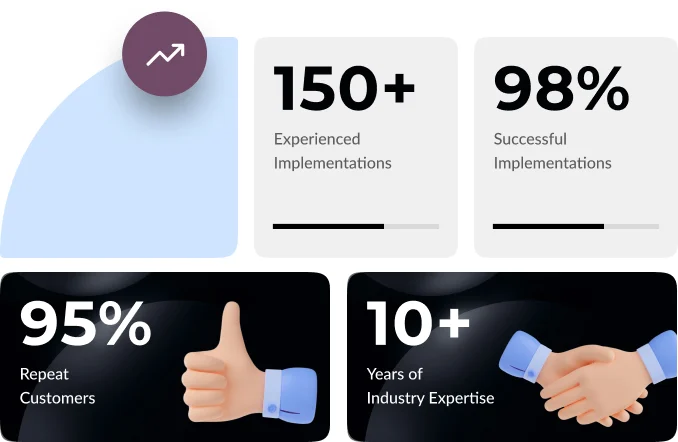
12+ Years of Odoo Expertise
As a trusted Odoo development company in the USA, we deliver out-of-the-box and complex ERP projects, custom modules and deep integrations.
End-to-End Odoo Services
As a comprehensive Odoo implementation company in the US, our services include consulting, customization, development, integration, migration, training, and ongoing support.
Dedicated USA-based Project Managers
Our team of Odoo implementation consultants includes USA-based PMs who ensure smooth communication, timely project delivery, and complete alignment with client goals.
Industry Specific Odoo Solutions
Our Odoo deployment services in the USA are tailored to meet the unique needs of industries like manufacturing, retail, distribution, healthcare, automotive, and more.
24/7 Global Support
Whether it’s technical troubleshooting, system optimization, or ongoing enhancements, our tailored Odoo solutions are available to keep your ERP performing at its best.
10 Hours of Free Consultation — Worth $500!
For a limited time, claim 10 hours of FREE expert Odoo consulting (valued at $500) to help with implementation planning, integration support, or ERP strategy.
Our Team Strength
Skilled Professionals
150+ skilled professionals across onshore and offshore teams
US Timezone
Aligned to US time zones for real-time collaboration
No Hidden Costs
Transparent pricing with no hidden costs
USA-based Team
Local project management from our USA-based team
Hire an experienced Odoo Developer – Get a  Functional Consultant free
Functional Consultant free
Other ERP Services We Provide

Proudly Serving Businesses Across the USA & Beyond
With over 100 successful implementations, Navabrind IT Solutions has built a strong presence in the USA, delivering tailored Odoo ERP solutions to clients across the region. Whether you’re a startup in Texas, a small business in Chicago, an enterprise in New York or a manufacturer in California, we are just a call away. We combine local expertise with a global delivery model to offer innovative, secure, cost-effective, and fully compliant ERP solutions – no matter where you’re located.
Texas
Leverage our expertise as an official Odoo partner to access customized, tailored ERP solutions. Harness Odoo for cost-effective growth.
California
Work with certified Odoo implementation experts in the USA to ensure faster ROI from their digital initiatives.
New York
Gain a competitive edge by leveraging the skills of a leading odoo development company in New York. Tailor your ERP system for maximum efficiency.
Florida
Optimize operations and drive innovation by partnering with a custom Odoo development firm for SMEs. We deliver industry-specific ERP solutions.
Chicago
Streamline operations, boost efficiency, and drive growth by partnering with leading Odoo ERP development experts in the USA.
North America & Beyond
Capitalize on a top Odoo development firm to accelerate digital transformation and optimize business processes.
Start Your Odoo Transformation with a Leading USA Partner
End-to-End Odoo Development Services All in One Place
Implementation
Choosing a trusted Odoo implementation partner in the US guarantees a seamless deployment, customized to your processes and built for long-term scalability.
Customization
Partnering with Odoo customization experts in the USA empowers businesses to tailor their ERP system precisely to their industry needs, driving greater efficiency and growth.
Integration
With Odoo integration, businesses can achieve a seamless connection between software tools, optimizing processes and fostering data-driven decision-making.
Migration
Odoo migration ensures a smooth transition from legacy systems, empowering businesses with a modern, flexible ERP that scales with growth.
Consulting
Working with an experienced Odoo Partner USA ensures you get strategic consulting that aligns Odoo’s capabilities with your business goals for maximum impact.
Development
With high-quality, reliable Odoo development services in the USA, you can unify operations, automate workflows, and adapt quickly to market changes.
Support & Maintenance
With continuous support and maintenance, businesses can optimize their Odoo ERP performance, ensuring reliability and long-term success.
Hire developers
Hiring an Odoo developer ensures that your system is tailored to your unique business needs, optimizing performance and efficiency.


AI-Driven Integrations with Odoo

Analyze market conditions, competitor pricing, and customer behavior to recommend optimal price points and automatically adjust pricing strategies.

Forecast inventory needs based on historical data, seasonal trends, and market signals to optimize stock levels and reduce carrying costs.

Identify patterns in browsing and purchasing behavior to personalize product recommendations and marketing messages.

Evaluate leads and opportunities using AI to prioritize high-potential prospects and recommend optimal follow-up strategies.

Predict potential disruptions, optimize routing, and get suggestions on alternative suppliers based on real-time data analysis.

Get 24/7 intelligent support, order inquiry handling, product questions, and basic troubleshooting within the Odoo environment.

Quickly tag and categorize product images, extract features, and ensure visual consistency across the catalog.
Curious about how our local team can power your business success?
- Local Project Managers
- Time Zone-Aligned Support
- Onsite Implementation on Request
Book a Free Strategy Session with the best Odoo development company in the USA.
Hire Our Odoo Developers + Functional Consultant
At Navabrind IT Solutions, we make it easy for businesses in the USA to build a dedicated Odoo team. Whether you need strategic guidance, functional expertise, or ongoing support — we offer flexible engagement models tailored to your goals.
Business
Consultant
Get expert guidance to align Odoo with your business goals.
Our Odoo Business Consultants work with your leadership team to streamline operations, reduce costs, and improve ROI. We help define KPIs, map business processes, and develop a digital transformation roadmap specific to your industry.
Functional
Consultant
Translate business needs into functional Odoo solutions.
Our experienced Odoo Functional Consultants bridge the gap between technical implementation and business requirements. We configure and customize Odoo modules, provide hands-on user training, and ensure seamless workflows.
Fixed Monthly
Packages
Affordable, scalable plans to keep your Odoo system running smoothly.
Choose from flexible monthly plans that fit your budget and business size. Ideal for companies looking for long-term functional support, quick bug fixes, upgrades, or minor enhancements — without the overhead of hiring full-time staff.
Industries we serve
At Navabrind IT Solutions, we understand that every industry operates with unique workflows, compliance needs, and customer expectations. That’s why our Odoo experts build tailored ERP solutions designed to solve real-world business challenges – no matter what the industry.
Our Odoo implementations are crafted to be modular, secure, and industry-specific – ensuring faster ROI and robust business transformation.
Retail & eCommerce
Manufacturing
Healthcare & Pharmaceuticals
Distribution & Wholesale
Steel
Chemical
Electronics
Automotive
Packaging
Furniture

Latest News
-
Press Release
Odoo PIM Press Release
Blog Posts
-
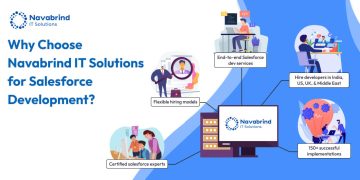 March 21, 2025
March 21, 2025A Business Case for Hiring Dedicated Salesforce Developers
Read moreLooking to hire a skilled Salesforce developer? Find expert tips on choosing the right talent to boost your CRM, streamline processes, and drive business growth. -
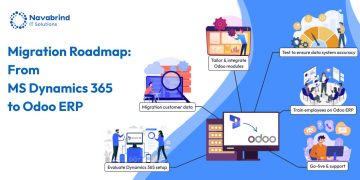 March 19, 2025
March 19, 2025ERP Migration from MS Dynamics 365 Business Central to Odoo
Read moreDiscover key steps and strategies for migrating from MS Dynamics 365 Business Central to Odoo, including challenges, benefits, and best practices. -
 November 13, 2024
November 13, 2024Adopt a Robust Quality Management System with PPAP in Odoo ERP
Read moreKnow more about Production Part Approval Process (PPAP) in Odoo ERP which helps to manage and track quality checks in manufacturers. Contact Us now. -
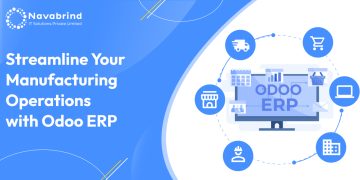 November 13, 2024
November 13, 2024Dynamic Product Presentations: The Future of PIM with Artificial Intelligence
Read moreDiscover how AI is transforming Product Information Management (PIM),enhancing data quality & customer experiences.Stay ahead with AI-driven PIM strategies
Case Studies
-
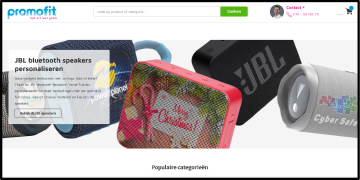 December 13, 2023
December 13, 2023A Leading Gifting Portal Used Integrated eCommerce To Scale Business
Read moreDiscover how a top gifting portal achieved unprecedented growth with integrated eCommerce solutions. Explore the case study of scaling success today -
 December 13, 2023
December 13, 2023How Cascade Rack Used Navabrind IT To Improve Operational Efficiency By 65%
Read moreNavabrind implemented Omni-Channel module for cascade rack, In which they can get features such as unified synchronized inventory management... -
 December 12, 2023
December 12, 2023Navabrind Transformed The Biggest Prayer Brand With Pimcore
Read moreExplore the remarkable journey of a top brand's digital evolution with Pimcore. Uncover how Pimcore transformed their PIM strategy, unparalleled success -
 November 24, 2023
November 24, 2023Navabrind Streamlined A Sophisticated Website In The Health & Safety Industry!
Read moreKnow How Navabrind Streamlined A Sophisticated Website in Health Industry. For Healthcraft product we have done Odoo & WooCommerce Integration and more.
Start building your Odoo team today — with a partner trusted across the USA.
Find answers to common questions
Find answers to the most common questions about our services, processes, and support. We’re here to help you make informed decisions quickly.
Is Odoo easy to customize?
Odoo strikes an impressive balance between out-of-the-box functionality and customization flexibility, making it relatively accessible compared to many other ERP systems. The platform’s modular architecture allows businesses to modify specific components without disrupting the entire system, which is particularly valuable when working with an experienced Odoo customization partner in USA. This architectural advantage means companies can start with standard functionality and incrementally implement customizations as their needs evolve, rather than requiring extensive modifications from day one.
The level of customization difficulty largely depends on the complexity of your requirements and your team’s technical capabilities. For basic customizations like adding custom fields, modifying forms, or adjusting workflows, Odoo’s Studio tool provides a user-friendly interface that requires minimal technical knowledge. However, for more sophisticated modifications such as custom module development, complex integrations, or fundamental changes to core functionality, you’ll benefit from engaging with an Official Odoo Partner or specialized Odoo development company USA like Navabrind IT Solutions. As a certified Silver Partner, we bring the technical knowledge needed to implement complex customizations while maintaining system integrity and upgrade compatibility.
It’s worth noting that while Odoo is designed to be customizable, excessive or poorly implemented customizations can create challenges during version upgrades or when integrating with other systems. The best approach is often to leverage as much standard functionality as possible, customizing only where it delivers clear business value. When working with an Open source Odoo partner in the US, they should guide you toward the right balance between customization and standardization, ensuring your system remains maintainable while still addressing your unique business requirements.
What key factors should businesses consider before beginning an Odoo implementation?
Clear business objectives should drive any Odoo implementation, rather than simply implementing technology for its own sake. Before engaging with an Odoo implementation partner in the US, businesses should thoroughly document their current processes, pain points, and desired future state. This clarity helps prevent scope creep and ensures the implementation delivers tangible business value. Organizations should also prioritize their requirements, distinguishing between “must-haves” and “nice-to-haves,” which allows for a phased implementation approach focused on the highest-impact areas first. Working with the best Odoo development company in the USA like Navabrind IT Solutions can help translate these business objectives into technical requirements and implementation strategies.
Resource allocation and change management are equally critical factors that many organizations underestimate. An Odoo implementation requires dedicated internal resources to work alongside your Odoo partner in the USA, including subject matter experts who understand your business processes and can make decisions about system configuration. Comprehensive change management strategies are essential for user adoption. This includes early stakeholder engagement, thorough training programs tailored to different user roles, and clear communication about how the new system will impact daily work. The most successful implementations occur when businesses view their Official Odoo Partner like Navabrind IT Solutions as a strategic advisor rather than just a technical implementer.
Data migration strategy and integration planning require careful consideration before implementation begins. Organizations should audit their existing data for completeness, accuracy, and relevance, deciding what historical data needs to be migrated and what can be archived. Integration requirements with other business systems should be identified early, as they can significantly impact implementation complexity and timeline. When selecting an Odoo development company in the US, evaluate their experience with similar integrations and data migration scenarios. Businesses should establish clear data governance policies and responsibilities that will continue beyond the implementation phase. A thoughtful approach to these technical considerations helps ensure your Odoo implementation provides a solid foundation for future business growth.
How to identify the best Odoo partner in the US?
Identifying the best Odoo partner in the US requires careful evaluation of their expertise, experience, and official credentials. Start by confirming their Odoo partnership status – Official Odoo Partners undergo rigorous certification processes and maintain specific technical standards, ensuring they have demonstrated proficiency in implementing and customizing the platform. Beyond certification, investigate their industry-specific experience, particularly with businesses similar to yours in size and complexity. An Odoo implementation partner in the USA like Navabrind IT Solutions, with relevant experience in your sector will understand your unique challenges and can recommend appropriate solutions based on industry best practices rather than generic approaches.
Technical capabilities should be thoroughly assessed when selecting an Odoo development company in the USA. Examine their team’s technical depth, including their expertise in database management, and system integration. Request case studies, particularly for projects involving similar customization or integration challenges to what you anticipate. The good Odoo development company should demonstrate not only technical proficiency but also strong project management capabilities, clear communication, and transparent processes. Pay special attention to how they handle requirements gathering, project planning, quality assurance, and post-implementation support, as these factors significantly impact implementation success.
Cultural fit and long-term partnership potential are often overlooked but critically important considerations. Your Odoo customization partner in the US should function as a strategic advisor, not just a service provider. They should be willing to challenge assumptions, propose alternatives when appropriate, and demonstrate a genuine interest in your business outcomes rather than just completing technical deliverables. Evaluate their communication style, responsiveness, and willingness to understand your business. Geographic considerations also matter – while remote work is effective for much development work, having an open source Odoo partner in the US with a physical presence near your operations can facilitate collaboration during critical phases like requirements gathering, training, and go-live support. The right partner relationship will extend beyond implementation to provide ongoing optimization and support as your business evolves.
Who should I reach out to for custom Odoo development services?
When seeking custom Odoo development services, prioritize Official Odoo Partners like Navabrind IT Solutions who have demonstrated their expertise through certification and a portfolio of successful implementations. These partners have met Odoo’s stringent requirements and maintain current knowledge of the platform’s capabilities and best practices. An Odoo partner in the USA with appropriate certification can provide assurance that your customizations will be developed according to Odoo’s architectural standards, maximizing compatibility with future updates and minimizing technical debt.
Specialized expertise should be a key consideration depending on your specific customization needs. Some Odoo development company teams excel at particular industries or functional areas, such as manufacturing, e-commerce, or warehouse management. Others may specialize in technical areas like systems integration, migration from legacy systems, or custom module development. The best Odoo development company for your project will be one whose specialized expertise aligns with your highest-priority requirements. During your evaluation process, ask potential partners about their experience with similar customizations and request detailed explanations of their development approach, including how they handle requirements gathering, development standards, quality assurance, and knowledge transfer.
Consider the complete service ecosystem when selecting an open source Odoo partner in the USA for custom development. Custom development rarely exists in isolation – it’s typically part of a broader implementation or optimization effort. Choose an Odoo customization partner in the USA who can provide end-to-end services including business analysis, system architecture, user experience design, development, testing, deployment, training, and ongoing support. This comprehensive approach ensures your customizations integrate seamlessly with the overall system and business processes. Investigate their development methodology and how they handle change management during the development process. A mature Odoo implementation partner in the USA will have established processes for managing scope changes, providing regular progress updates, and ensuring quality through rigorous testing. This holistic approach to custom development maximizes the value of your investment and leads to solutions that truly address your business needs.
What is the criteria to identify the right Odoo implementation consultants
Identifying the right Odoo implementation consultants requires evaluating their technical expertise and implementation methodology. Look for consultants with comprehensive knowledge of Odoo’s architecture, modules, and customization capabilities, along with strong programming skills and experience with PostgreSQL databases. The best consultants maintain a portfolio of successful implementations across different industries and can demonstrate how they’ve solved complex business challenges. Their methodology should include thorough business analysis, detailed requirement documentation, systematic testing processes, and comprehensive training programs. An Odoo partner in the USA with a structured implementation approach will more reliably deliver solutions that align with your business needs while minimizing risks and unexpected costs.
Industry expertise and business acumen are equally important when selecting
Odoo implementation consultants. The right consultants don’t simply implement technology—they understand your industry’s unique processes, challenges, and regulatory requirements. When evaluating an Odoo development company USA, inquire about their experience in your specific sector and how they’ve helped similar businesses overcome challenges. Quality consultants ask insightful questions about your business objectives rather than focusing exclusively on technical specifications. They should be able to challenge assumptions, suggest process improvements, and recommend appropriate configurations based on industry best practices. This business-focused approach ensures your Odoo implementation delivers meaningful operational improvements rather than simply replicating existing processes in a new system.
Post-implementation support capabilities should be carefully assessed when choosing Odoo implementation consultants. The most successful ERP implementations involve ongoing optimization and support after the initial go-live. The best Odoo development company will offer clear support agreements with defined response times, regular system health checks, and proactive optimization recommendations. Evaluate their team size, support structure, and client retention rates to gauge their reliability as a long-term partner. Inquire about their knowledge transfer practices—how they document customizations, train your team, and build internal capacity. The right Odoo implementation partner in the USA recognizes that implementation is just the beginning of your digital transformation journey and positions themselves as a strategic advisor for your continued business evolution.
Why should my business work with an Official Odoo Partner
Working with an Official Odoo Partner provides validated expertise and direct access to Odoo resources that unofficial partners simply cannot match. Official Partners undergo rigorous certification processes, demonstrating proficiency in implementing, customizing, and supporting the Odoo platform. This certification ensures your Odoo customization partner in the USA has met specific technical standards and maintains up-to-date knowledge of best practices and new features. Official Partners also receive priority access to Odoo’s technical support, enabling them to resolve complex issues more efficiently. They typically have established relationships with Odoo’s product development team, allowing them to provide informed guidance on upcoming features and potentially influence the product roadmap based on client needs. This official relationship translates to more reliable implementations and better long-term results for your business.
Implementation quality and risk reduction represent compelling reasons to engage with an Official Odoo Partner. These partners follow Odoo’s recommended implementation methodologies, ensuring your system is configured according to best practices rather than expedient shortcuts that might create future problems. An Open source Odoo partner in the USA with official status is more likely to implement customizations that remain compatible with Odoo’s core architecture, reducing complications during version upgrades. They typically employ more systematic testing processes and quality assurance standards, minimizing the risk of business disruptions during implementation. Official partners often develop customizations with an eye toward long-term maintainability rather than quick fixes, resulting in more sustainable solutions. This approach significantly reduces the total cost of ownership over your system’s life cycle.
Long-term business continuity and growth support make Official Odoo Partners the prudent choice for forward-thinking organizations. The best Odoo implementation partner in the USA will view your implementation as the beginning of a strategic partnership rather than a one-time project. Official Partners are more stable businesses with established track records, reducing the risk that your technology partner will disappear when you need support. They typically offer comprehensive service portfolios including implementation, customization, training, support, and ongoing optimization services. An Odoo development company USA with official status is more equipped to help your business adapt to changing market conditions and leverage new Odoo capabilities as they become available. This continuity of support and strategic guidance enables your business to continually extract maximum value from your Odoo investment as your requirements evolve. When selecting the best Odoo development company, official partnership status should be considered a fundamental requirement rather than an optional credential.


